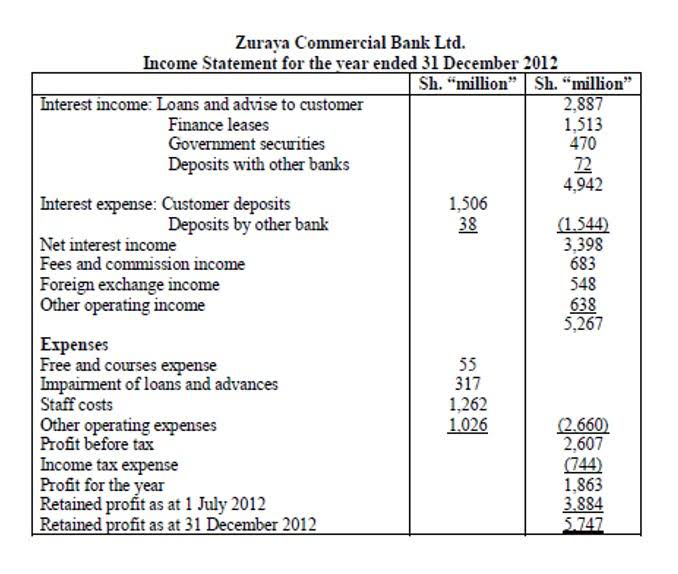Vertical common-size analysis of financial statements explanation, example

As a result, businesses can quickly compare their financial performance to industry benchmarks. A study by PwC indicated that companies using vertical analysis were 15% more efficient in comparative financial evaluations. The key components of vertical analysis are base figure, percentage calculation, common size financial statements, trend analysis, comparative analysis, structural composition, and key ratios. Another form of financial statement analysis used in ratio analysis is horizontal analysis or trend analysis. Likewise, all the items in the balance sheet are stated as a percentage of the total assets. The opposite of the vertical analysis of financial statements is the Horizontal analysis always looks at the amount from the financial statement over the horizon of many years.

Key Takeaways
The normalization and standardization provided by converting figures into percentages of a total make vertical analysis a crucial tool for effective financial analysis and strategic decision making. In the realm of finance, vertical analysis aids in comparing the composition of income and expenses over time or against industry peers. By converting figures into percentages, it normalizes financial data and makes it easier to identify trends, patterns, and areas of concern.
Base Figures
This enables the user to quickly judge the relative size and importance of each line item. For example, on the income statement, expressing revenue as 100% and every expense item as a percentage of total revenue immediately shows which costs are highest and lowest relative to the company’s sales. Vertical Analysis using the Balance Sheet helps in understanding the proportion of each asset, liability, and equity item in companies. For instance, suppose the total assets of a company are Rs.100 crore and cash is Rs.10 vertical analysis equation crore, then the cash would be 10% of total assets.

Top 15 Financial Metrics and KPIs in 2024
Access and download collection of free Templates to help power your productivity and performance. She holds a https://www.bookstime.com/ Bachelor of Science in Finance degree from Bridgewater State University and helps develop content strategies. Further, when working with large data sets, we recommend cleaning up the data to improve the overall visual representation of the analysis.
- With our financial data presented in Excel, we can start to calculate the contribution percentages on either the side or below the income statement.
- For instance, a vertical analysis of an income statement might reveal that a company is spending a higher percentage of its revenue on marketing expenses compared to its competitors.
- For example, on an income statement, every line item is stated in terms of the percentage of gross sales.
- Vertical analysis represents each item on a financial statement as a percentage of the total.
- There is a baseline period, and numbers from succeeding periods are calculated as a percentage of the base period.
- The assets section is informative with regard to understanding which assets belonging to the company constitute the greatest percentage.
- This shows that the amount of cash at the end of 2024 is 141% of the amount it was at the end of 2020.
Vertical Analysis for Income Statements
On the balance sheet, seeing the trend in current assets as a percent of total assets indicates improving or worsening liquidity. Current assets were 40% of total assets in 2020, 50% in 2023, and 45% in 2022, it shows liquidity increased but then partially dropped back down. Viewing financial statement trends in percentages through vertical analysis rather than absolute amounts removes the impact of overall growth or decline. This allows you to spot changes in the composition and proportional relationships between line items. On the balance sheet, vertical analysis displays the financing structure in terms of percentages of assets. Seeing the ratio of current assets to fixed assets shows the company’s investment in liquidity versus long-term productivity.

Everything You Need To Master Financial Modeling
- It can be used to compare different components of companies and the same company in different time periods.
- Total liabilities is also an option if specifically wanting to analyze how debt relates to assets.
- Vertical analysis formulas are used by businesses to compare the proportions of different line items to industry averages or those of other companies in the same industry.
- Comparing these companies using vertical analysis alone may not provide an accurate assessment.
- Additionally, this fundamental analysis method helps businesses identify trends and patterns in their financial statements.
So by using this method, it is easy to understand the net profit as it is easy to compare between the years. We can easily understand that the total expenses gradually increased from 43% to 52%, and the net income get reduced from 1st year to 2nd year. In the 3rd year, the COGS decreased compared to the previous years, and the income increased. Example of the vertical analysis accounting of the financial statement, which shows the total amount and percentage. Vertical analysis, often referred to as common-size analysis, is a crucial financial tool used in the world of business and finance to assess the relative proportions of different financial statement items. With this spreadsheet set up, simply update the raw dollar amounts each period and the vertical analysis will instantly recalculate, creating an automated tool to monitor trends and comparisons over time.
Step 2. Vertical Analysis of Income Statement

Here, we’ve chosen “Revenue” as the base figure for the common size income statement, followed by “Total Assets” for the common size balance sheet. For instance, a vertical analysis of an income statement might reveal that a company is spending a higher percentage of its revenue on marketing expenses compared to its competitors. This could prompt management to reevaluate their marketing strategy or cost structure to enhance profitability. On the balance sheet, the current assets to total assets ratio indicates what percentage of assets can be quickly converted to cash to meet short-term obligations if needed. The fixed assets to total assets ratio shows the percentage of assets tied up in things like property, plants, and equipment.

Additionally, this fundamental analysis method helps businesses identify trends and patterns in their financial statements. These insights can then be used to make informed decisions regarding their financial strategy. According to a report by Deloitte, businesses that regularly use vertical analysis have a 20% higher chance of identifying financial anomalies early. Vertical analysis is an accounting tool that enables proportional analysis of documents, such as financial statements. While performing a vertical analysis, every line item on a financial statement is entered as a percentage of another item. bookkeeping For example, on an income statement, every line item is stated in terms of the percentage of gross sales.
